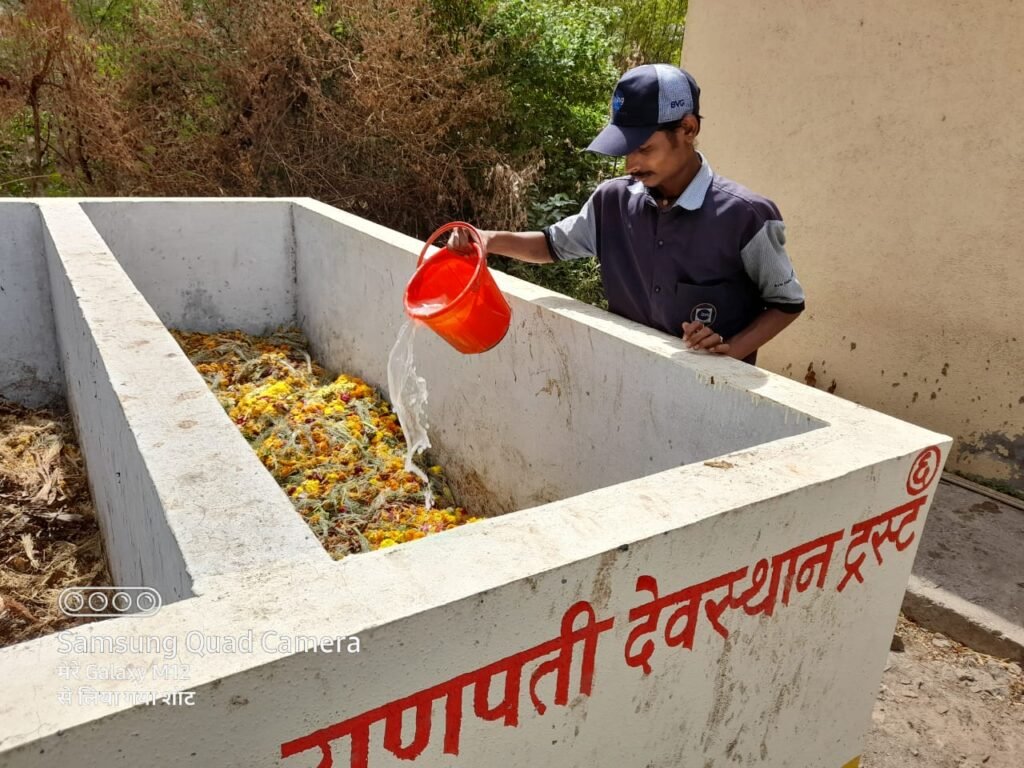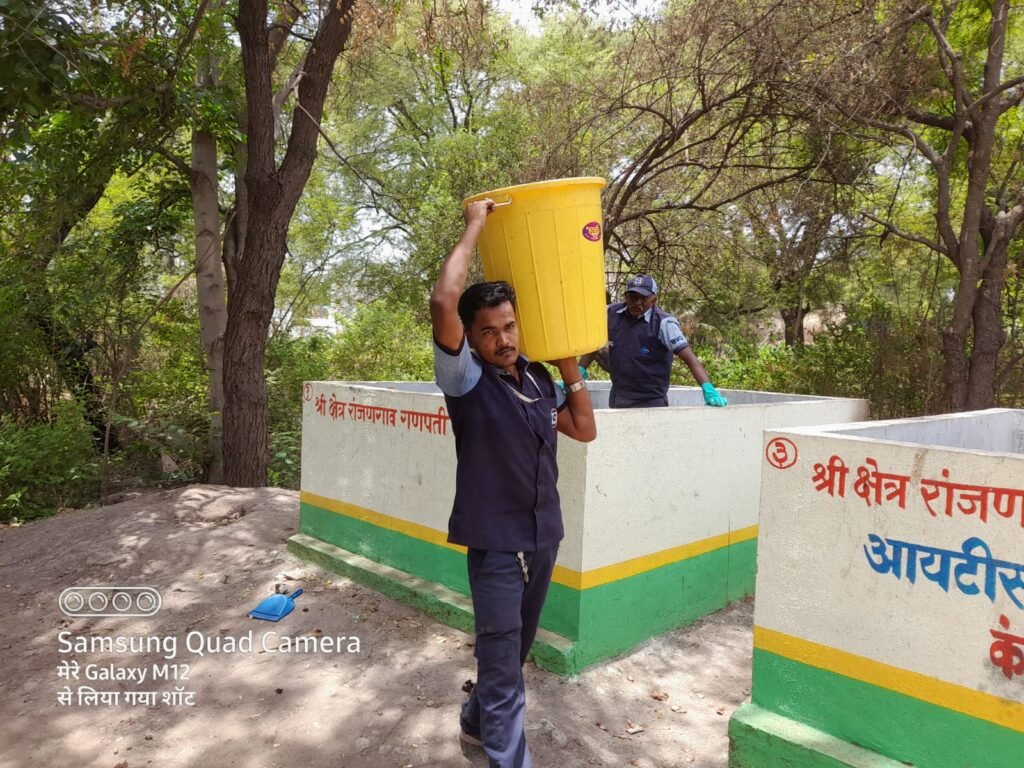
The Making of A Green Temple in Ranjangaon
Places of religious worship like temples can be at the vanguard of the green movement in Pune,Maharashtra. Take the case of the Ranjangaon Mahaganapati temple which has gone through major changes in terms of its waste management disposal system. The temple trust has proactively
coordinated with the ITC-supported FINISH Society team for implementing the program. Wet and dry waste are now well managed in the temple premises itself. Temple trust is satisfied with theintervention put in place by ITC & FINISH for making the temple green. They are further planning to take their efforts to next level to ensure sustainability of the model and add new interventions. The temple is looking forward to set an example before other big and small temples of Pune district. Ranjangaon Mahaganpati happens to be one of the Ashtavinayaka temples in the city. The temple was built somewhere between the 9 th to 10 th century. It is located in Shirur Taluka about 51.5 km (via Pune – Ahmednagar Highway) from Pune. The devotees end their Ashtvinayak journey by visiting the Ranjangaon temple. On an average two thousand devotees visit the temple on normal days. On important days like Ganesh Chaturthi or Anant Chaturthi around 25 thousand devotees visit the temple. As much as 3.5 MT waste is generated per month on an average. The waste generated include flowers and garlands, which form compostable waste.
Earlier process:
There was no streamlined process for waste management in the temple. Even though there was cleanliness inside the temple, the waste generated was not handled properly and the outside premises were not clean. The garbage vulnerable point was formed by the temple only and heaps of the mix waste were formed at the back of the temple. The temple trust was not concerned about the waste once it was outside the temple. Kilos of flowers were dumped at the back of the temple with mix waste like plastic, paper cups and plates and bottles. The frequency of waste collection vehicle visiting the temple was low due to which the waste was dumped at the back. At times, the mix waste was given to the vehicle which often visited the area and was then dumped at the dump site. The overall picture of the waste handling mechanism in the temple was very poor before the intervention by ITC & FINISH.
Waste intervention:
There were rounds of interaction with the Mahaganapati temple trust regarding tacking the waste management issue and it was figured out how ITC-FINISH can assist in the scientific implementation of waste segregation and scientific disposal. An exposure visit was also arranged by ITC to Tamil Nadu for a green temple visit. After the visit a strategy was designed to implement the waste management strategy. It included formation of compost pit for biodegradable waste management, creating awareness among people for waste segregation and not bringing plastic in temple premises, holding of dry waste and sending it to the MRF site.
1. Compost pit – six pits have been constructed behind the temple to convert all organic waste mostly flowers to compost in 50-60 days.
2. Training of cleaning staff – temple cleaning staff are trained on wet waste composting, formation of bio decomposer and dry waste segregation.
3. Creating awareness among people- Information boards were displayed at places in and outside of the temple premises for making people aware about the concept of a green temple and informing them to keep the waste segregated in separate dustbins.
4. Holding of dry waste – once collected, all dry waste is transferred to MRF centre for recycling or selling.
5. Cleanliness drives – drives are conducted by the temple management once in a month to clean garbage vulnerable points.
6. Management of Coconut shell by making coco pit.
Impact
The waste management intervention has resulted in creating an environmentally sustainable structure named as “Green Temple” where 100% waste is segregated and treated/ recycled to be used as a resource and provide a source of revenue generation.
1. Compost formation– The temple generates an average of 200 kg of compost from around 5MT flower waste. This compost is used in the temple garden and for agriculture purposes by the temple trust.
2. Clean environment – As the dry and wet waste is managed properly in the temple and the surrounding area of temple is cleaned during the cleanliness drive, the environment looks clean inside and outside of the temple.
3. Development as model/hub temple– As the Mahaganapati temple came forward as a hub for the making of a green temple, other large and small temples are viewing this as a model to be replicated. Big temples like Bhima Shankar of Khed block Pune, is likely to replicate the green temple model of Mahaganapati temple



